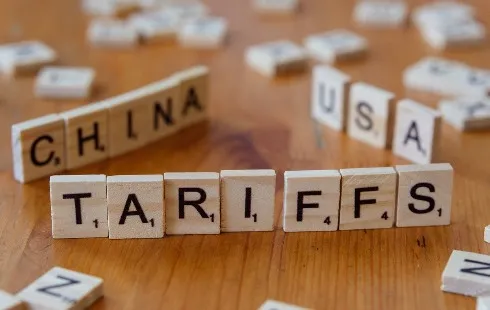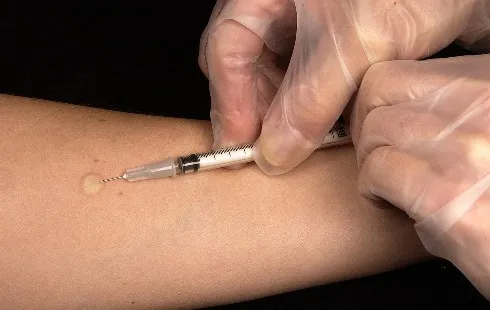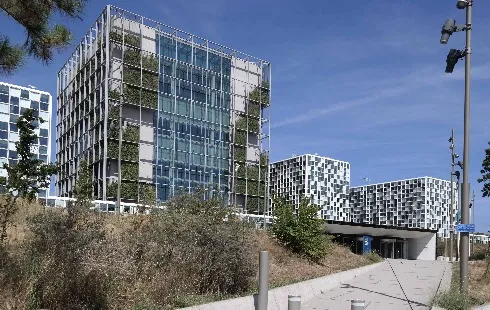
Trump's Tariff War: China Urges Immediate Repeal of Tariffs Amid Countermeasures
Section: News
At the bottom of the ocean, there is a strange world of microbes thriving in mud sediments. They all strive toward the same vital goal of using oxygen and available nutrients to produce energy for growth, so competition is fierce.
The bacteria on the seabed surface are the lucky ones, as they can readily take up oxygen from sea water. But a couple of centimeters below oxygen is scarce, and bacteria buried deep into the mud need to come up with more ingenious ways to gain energy.
In a new study published today in Nature, a research team led by Nils Risgaard-Petersen and Lars Nielsen at Aarhus University in Denmark, shows how some bizarre bacteria employ a cunning trick to both feed from nutrients in deep marine sediment and consume oxygen at the surface: they function as living electric cables.
A couple of years ago, the team made the astonishing discovery that electric currents linked oxygen consumption at the top sediment layers with hydrogen sulfide at the bottom, more than a centimeter away. "The identity of the electron conductor has however been an enigma" Risgaard-Petersen says.
The scientists postulated that bacteria could work together to conduct these electric currents through a network of tiny hair-like appendages called nanowires. However, evidence so far shows that bacterial nanowires can only transfer electrons over shorter distances, so this alone could not explain the intriguing results.
To solve this riddle, Risgaard-Petersen and colleagues collected samples of marine sediment from Aarhus bay and carefully scrutinized the top sediment layers. In a true eureka moment, they found tufts of entangled centimeter-long filamentous bacteria. "Before us nobody had hypothesized about its existence, so nobody had looked for it" says Risgaard-Petersen.
The filamentous microbes turned out to be new members of the Desulfobulbaceae family, which includes bacteria capable of consuming hydrogen sulfide in deep sediment zones. This seemed like a good indication that these long bacteria filaments could be mediating the flow of electrons across distant sediment layers. Indeed, when the scientists cut the filaments, the electric currents stopped and the consumption of oxygen and hydrogen sulfide plunged.
"Risgaard-Petersen and collaborators linked the presence of bacterial filaments to the electrical coupling of the oxygen and sulfide layers in marine sediments, which are typically separated by millimeter to centimeter distances" says Gemma Reguera, a microbiologist from Michigan State University specialized in the study of sediment bacteria "These [distance] scales truly defy our current knowledge of biological electron transfer".
Each filament consists of many bacterial cells lined up in a long chain and surrounded by a shared outer membrane. Interestingly, this outer membrane has uniform ridges filled up with charged material running along the entire length of the filament. The authors of the study believe these ridges could be 'internal insulated wires' for driving the electron flow across sediment layers. However, these molecular details remain unclear.
Derek Lovley, an expert on electromicrobiology at the University of Massachusetts thinks that discovering the source of this 'potentially conductive material' is crucial. "As with the initial studies with [bacterial nanowires] there will be skeptics because they have not been able to measure long-range electron transport directly" and adds "It will be interesting to watch this story unfold."
More than tens of thousand kilometers of filamentous bacteria live in a single square meter of mud from the undisturbed seabed, so it is possible that this type of long-distance electron transport could be widespread in nature. The long filaments are however very fragile, and small disturbances such as sea waves could lead to 'fatal cable breakage'. Eric Roden, an expert on biogeochemistry at the University of Wisconsin notes "Whether or not such filamentous networks are actually present and active in natural sediments, where all sorts of mixing processes and other disturbances are common, remains to be determined".
Since the discovery of bacterial nanowires, several research teams have explored their potential biotechnological applications, for example, in bioelectronic devices or for electricity generation from renewable sources, such as waste. Could the filamentous bacteria potentially be used for technology development?
"We need to know more about how current is transported inside these organisms" explains Risgaard-Petersen "but perhaps there is a possibility to grow electric conductive structures for use in electrical devices".

Section: News

Section: News

Section: Health

Section: News

Section: News

Section: Travel

Section: News

Section: News

Section: Politics

Section: Arts

Health Insurance in Germany is compulsory and sometimes complicated, not to mention expensive. As an expat, you are required to navigate this landscape within weeks of arriving, so check our FAQ on PKV. For our guide on resources and access to agents who can give you a competitive quote, try our PKV Cost comparison tool.

Germany is famous for its medical expertise and extensive number of hospitals and clinics. See this comprehensive directory of hospitals and clinics across the country, complete with links to their websites, addresses, contact info, and specializations/services.

Join us for a captivating organ concert featuring Giacomo Gabusi from Bologna. Experience an evening of classical music with works by Wagner, Bossi, and Messiaen, among others. This event is part of the Pasinger Orgeltage series, promising a delightful musical experience. Admission is free, but...
No comments yet. Be the first to comment!